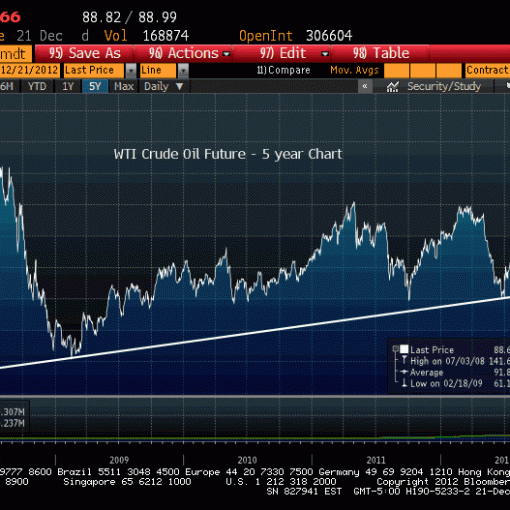Covestor model: Trend Spotting
The recent few months have been a trying time for investors. In the spring the Federal Reserve, the architect of the economic recovery, appeared to have the situation well in hand. The economy was showing signs of life, and unemployment, while still high, was beginning to edge downward. Around this time, Japan’s crisis captivated the world and crippled their economy. Economic data started to show signs of economic slowness, and was an easy target Japan for the blame. Other things too, including oil prices and the weather, were sighted as temporary impediments to the recovery. The end of the Fed’s QEII stimulus program was noted as well, but was equally lumped into the mix with the other reasons.
We now know that QE I & QEII were the sources of any semblance of economic growth we had in the last 18 months, after TARP and the Fed’s other programs saved the economy from the brink. By the time QEII came along, markets were performing well and it was seen as an economic insurance policy. It appeared that The Fed and The Administration fully viewed it this way, just like investors and consumers. It was heavily discounted as having any real impact, but in reality it was the last real barrier between growth and recession.
Companies dipped a toe in the job market to test the economic waters, but job growth didn’t come in any meaningful way. And when QEII ended in June, so did the new jobs. It was convenient to blame Japan, oil, and the PIGS in Europe because they were surely to account for some slowdown. But starting in July, the economic data was suddenly and consistently showing a negative impact that was more than just from one of these other sources. The wave of hope for the slowdown being temporary faded entering August, when new worries about a bailout for Italy, a much larger and thought to be healthier country, suddenly had bond yields skyrocketing. Fear of a recession and a worsening credit crisis gripped the markets, producing near-panic selling by investors and a severe market correction in a matter of weeks.
Outlook
As conditions in the developed world and its largest trading partner China struggle with nascent growth and large debts, investors remain hopeful that the Fed and the Administration will find a solution to keeping the economy out of recession.
While this is possible, the odds are very high that this will not happen. The Fed has already made the unusual move to pre-announce that interest rates will remain low through 2012, and the Administration has shown us its job creation plan. While the stock market, the best barometer for the economy, has rallied from its lows, the size and complexity of the macro economic issues facing the developed world are still dominating.
A study of the long-term trend of the stock market shows a climbing line, but one with dips along the way. These dips don’t appear that bad in context of the overall progress of the line over its history, but 10% dips and 20% drops are fairly regular occurrences and part of the fabric of human nature and capitalism. It is my guess that the current issues we face, while surmountable with time, are the type and size that usually cause 20% market corrections, rather than 10% pull-backs.
As I have said continuously in my blog and on Twitter conversation, the market continues to be in a range of 1,120 to 1,250 on the S&P 500. Eventually, it will take a direction, one way or another. Unless meaningful economic progress develops soon, I believe the 1,120 boundary is the most likely to be breached. This would open up the market to the next leg down. While painful at first, as a longer-term investors I’d welcome this as a buying event, as I’d view it as just another small mark on the overall, historical market uptrend.
The reason we work on developing outlooks and scenarios is so that we are prepared, and it doesn’t cause panic and emotional selling that derails so many investors. My current plan is to lighten up my holdings around 1,250 so that I have some defense (cash) that could be deployed lower. If however, the market can meaningfully break through 1,250, the upper end of the range, then I will be watching for an economic confirmation that shows the economy is back on track.



